If you’re exploring asset management and utilization, you might be seeking to enhance your asset’s efficiency and maximize your investment returns. The core of asset management is to ensure that every asset in your arsenal contributes to your business objectives, whether it’s a piece of heavy machinery or a software license. In this article, we’ll walk you through practical strategies and technologies that can help you track, manage, and utilize your assets to their fullest potential—increasing productivity and cutting down on unnecessary expenses.
Key Takeaways
- Effective asset management requires implementing robust systems, like Asset Manager software, to track usage, improve maintenance schedules, and ensure efficient resource allocation, contributing to organizational growth and competitive advantage.
- Modern businesses are utilizing automated asset tracking solutions, such as RFID, to accurately monitor and manage assets in real-time, thus optimizing operations, improving security, and supporting informed decision-making.
- Advancements in technology, including Internet of Things (IoT) devices and cloud-based platforms, are vital for efficient asset management, offering real-time monitoring, proactive maintenance, and scalability while enhancing operational efficiency and profitability.
Maximizing Efficiency and Security with Asset Manager
At the heart of effective asset management lies the power to maintain accurate records of assets, ensuring optimal utilization and preventing costly issues such as unnecessary purchases or emergency maintenance. By implementing a robust asset management system, businesses can gain a competitive advantage by allowing them to focus on growth-oriented activities such as marketing and customer service. This is where Elliott’s Asset Manager software steps in, providing businesses with the tools they need to effectively track and manage their assets.
Asset Manager offers a comprehensive suite of functionalities designed to streamline the asset management process. By providing historical data on asset usage, cost, and location, it enables businesses to make informed decisions on asset allocation, maintenance, and disposal. Moreover, the software also promotes accountability within an organization, ensuring that all assets are used effectively and responsibly.
An added layer of protection that Asset Manager provides is the ability to:
- Identify and mitigate risks associated with asset ownership and utilization
- Keep a close eye on asset life cycles and maintenance schedules
- Prevent unexpected breakdowns and costly downtime
- Enhance productivity and operational efficiency
The Role of Asset Utilization in Business
In the realm of business, assets are not merely possessions; they are the lifelines that drive growth and profitability. Efficient asset utilization is key to maximizing revenue generation and crafting effective asset management strategies. It involves making informed asset allocation decisions to ensure that resources are utilized where they can deliver the maximum returns. This requires a comprehensive understanding of both tangible and intangible assets and their respective roles in driving business performance.
A strategic approach to asset management begins with conducting a comprehensive asset inventory. This involves defining what qualifies as a business asset and categorizing assets into tangible and intangible categories. It’s essential to identify overutilized or underutilized assets and include new assets for real-time monitoring and analysis. An asset tracking system can play a crucial role in this process, helping businesses to track assets, identify inefficiencies, and optimize asset allocation.
Asset management software, including asset tracking software, can radically transform the way businesses manage their assets, from fixed assets such as machinery and equipment to intangible assets like intellectual property and brand value. By implementing an automated asset tracking system, businesses can keep a real-time log of asset location, usage, and condition in an asset tracking database, thereby enabling them to make informed strategic decisions. Asset tracking systems, along with an asset monitoring system, further enhance the capabilities of asset tracking and management, ensuring optimal utilization and maintenance of physical assets.
Asset management is not a one-size-fits-all solution. It requires a bespoke approach tailored to the unique needs and objectives of each business. By leveraging a robust asset management platform, businesses can ensure that their assets are being utilized effectively and efficiently, driving operational excellence and boosting bottom-line performance.
Asset management is about ensuring that every asset, be it a physical machine or an intangible patent, contributes to the business’s overarching goals. An effective asset management solution not only helps businesses track assets but also provides valuable insights into how they can be better utilized to drive growth and profitability.
Implementing Automated Asset Tracking Solutions

In business operations, keeping track of assets can often be a complex task. However, with the advent of automated asset-tracking solutions, businesses can now manage their assets with unprecedented ease and efficiency. RFID asset tracking technology, in particular, has revolutionized the way businesses monitor and manage their assets.
RFID (Radio Frequency Identification) technology offers automation in asset management, significantly reducing manual labor and minimizing the risk of human error. It uses radio signals to read and capture information stored on a tag attached to an asset. This technology provides a Real-Time Locating System (RTLS), enabling RFID asset tracking and offering a favorable return on investment by providing valuable data for decision-making.
By integrating RFID technologies, businesses can effectively track their assets, improving their asset management processes. These technologies offer the following benefits:
- Track the location of assets in real-time
- Provide data on the condition of assets
- Monitor asset usage and maintenance schedules
- Enable more informed decision-making
By utilizing RFID technologies, businesses can optimize their asset management and improve overall efficiency.
Barcode scanning is another effective asset identification method that complements RFID tracking. By attaching barcode or RFID tags to assets, businesses can quickly and accurately identify and track assets, reducing the chances of misplaced assets and ensuring efficient asset utilization.
Incorporating these technologies into an asset management system can significantly enhance asset-tracking processes. By automating asset identification and tracking, businesses can ensure accurate inventory control, enhance security measures, and ultimately drive profitability.
The Intersection of Asset Management and Technology

In today’s rapidly evolving digital landscape, technology is playing an increasingly crucial role in asset management. Internet of Things (IoT) devices and cloud-based platforms are revolutionizing the way businesses monitor and manage their assets, offering unprecedented levels of efficiency, security, and scalability.
IoT devices offer a wealth of potential for asset tracking. By connecting assets to the internet, businesses can monitor their assets in real-time, providing precise condition monitoring and enabling proactive maintenance schedules. This not only extends the lifespan of assets but also improves productivity and operational efficiency.
On the other hand, cloud-based asset management platforms offer a centralized solution for streamlined asset tracking. By storing data in the cloud, businesses can:
- Access real-time information about their assets from anywhere, at any time
- Eliminate the need for manual data entry
- Reduce the risk of errors
- Enhance the accuracy and efficiency of asset management processes.
Moreover, these platforms offer enhanced security, protecting valuable asset data from potential threats. They also offer scalability, allowing businesses to easily expand their asset tracking system as their business grows.
In a nutshell, the intersection of asset management and technology offers exciting possibilities for businesses. By leveraging IoT devices and cloud-based platforms, businesses can:
- Significantly enhance their asset monitoring processes
- Centralize data
- Enhance security and scalability
- Ultimately drives operational excellence and boosts bottom-line performance.
Streamlining Maintenance Schedules with Asset Management Tools
Efficient asset management is not just about tracking and monitoring assets; it’s also about maintaining them effectively. A proactive approach to maintenance can significantly extend the lifespan of assets, improve productivity, and reduce downtimes. Asset management tools can play a crucial role in this process, enabling businesses to shift from reactive to proactive maintenance.
Implementing a proactive maintenance schedule involves:
- Regular inspections and maintenance of assets, based on their usage and condition, rather than waiting for them to break down
- This approach not only reduces the risk of unexpected breakdowns but also maximizes the life expectancy of assets
- Saving substantial costs in the long run.
Asset management tools can significantly streamline this process. By providing real-time data on asset condition and usage, these tools can help businesses implement preventive and predictive maintenance schedules, significantly improving productivity and operational efficiency.
Properly tagging assets for real-time tracking is a best practice in the asset tracking process, but is very costly and an expense that isn’t supported by most budgets. Using a solution that assigns accountability to the user by checking out items to a person and monitoring that data in real time, provides a high level of asset management while working within a more realistic budget utilizing personal accountability. By assigning unique identifiers to assets and conducting regular asset audits, businesses can ensure accurate inventory control and optimize asset usage.
By leveraging asset management tools, businesses can shift from reactive to proactive maintenance, extend asset lifespan, and optimize asset utilization. This not only improves productivity and operational efficiency but also contributes to maximizing returns on assets.
Streamlined Asset Management with Elliott Data Systems Asset Manager Software
With Elliott Data Systems’ Mobile Solutions®, our Asset Manager software offers a robust set of features to streamline asset tracking and management within organizations. Here’s what sets our solution apart:
- Efficient Tracking: Utilize barcode labeling to easily identify and track assets of all types and sizes.
- Assignment Management: Seamlessly assign assets to individuals or groups, ensuring clear ownership and accountability.
- Transparent Data Sharing: Share asset data securely with authorized departments or divisions, fostering collaboration and transparency.
- Structured Organization: Establish parent-child relationships among assets for organized management of complex asset structures.
- Compliance Support: Attach and link documents to assets to meet regulatory standards such as NFPA 1851, simplifying compliance management.
- Maintenance Tracking: Schedule and monitor maintenance activities for vehicles and equipment, optimizing performance and longevity.
- Customized Reporting: Categorize assets by department, grant, or purchase date for tailored reporting and analysis.
- Regulatory Compliance: Offer NIMS resource typing and provide NIMS form PDFs for federal reimbursements, ensuring compliance with regulatory requirements.
- Grant Management: Effectively manage grant-funded assets with specialized tools and functionalities.
Deployment Options:
- Online Web Application: Access and manage asset data conveniently from any location with internet connectivity.
- Asset Manager App – Manage assets quickly using your smartphone, tablet or handheld device to perform inventory management, register a new asset and replenish assets from any location.
- Client-Based Traditional Software: Deploy the traditional client-based software solution for on-premises asset management, with integration capabilities for ID printing systems.
Integration Capabilities:
- Seamless Integration: Integrate with other Mobile Solutions Core and Companion products to create a fully comprehensive asset management system tailored to your organization’s specific needs.
At Elliott Data Systems, we are committed to delivering innovative solutions that optimize asset management processes and drive operational excellence. For further information on how our Asset Manager software can revolutionize your asset tracking and management processes, reach out to us at 1-888-345-8511.

